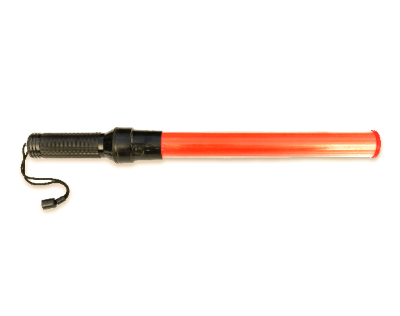What Is a Guide Bar?

The term “guide bar” refers to a rod used to guide aircraft. It is also known by the name “paddle.”
There are two main types of guide bars: rod-shaped and spatula-shaped. The spatula-shaped version is traditional, but recently, the rod-shaped variety that can be used day and night has become mainstream. The predominant colors are mainly yellow or orange.
Individuals working with guide bars are called marshals, and their profession is referred to as marshaling. Marshals communicate signals to pilots by adopting specific poses regulated by ICAO (International Civil Aviation Organization). For example, raising both arms high indicates the start of guidance, while making a large “X” overhead signals a stop.
Effective coordination between marshals and pilots is crucial to facilitate tasks such as loading and unloading luggage smoothly.
Uses of Guide Bar
The primary use of the guide bar is, quite literally, to guide aircraft. When guiding aircraft to designated locations specific to each aircraft model during takeoff and landing, marshals use guide bars. Performing tasks without holding anything would make coordination with pilots difficult, so guide bars in conspicuous colors such as yellow or red are used.
Pilots of aircraft are positioned several meters above the ground, making it challenging to align precisely with stop lines through visual observation alone. Therefore, marshals serve as the eyes, guiding the aircraft not only to a stop but also in straight paths, at reduced speeds, and during turns at the airport.
While using guide bars is a very analog method, it offers the advantage of being able to guide aircraft regardless of adverse weather conditions or system troubles.